This grade II listed property comprises a three-storey main block, with a central hanging sign, and a right-hand extension in the same style. Alongside the extension is a 14-foot archway into the large yard. There is a two-storey building at the rear, but most of the stables have been demolished. Formally known as the Bath Arms Hotel, it is one of the town’s three surviving 18th-century inns.
A photograph and text about The Bath Arms.
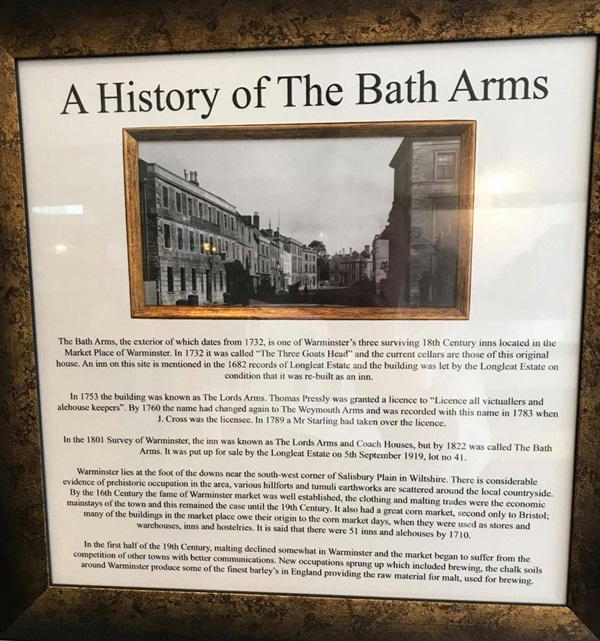
The text reads: The Bath Arms, the exterior of which dates from 1732, is one of Warminster’s three surviving 18th century inns located in the Market Place of Warminster. In 1732 it was called The Three Goats Head and the current cellars are those of this original house. An inn on this site is mentioned in the 1682 records of the Longleat Estate and the building was let by the Longleat Estate on condition that it was re-built as an inn.
In 1753 the building was known as The Lords Arms. Thomas Pressly was granted a licence to “Licence all victuallers and alehouse keepers”. By 1760 the name had changed again to The Weymouth Arms and was recorded with this name in 1783 when J Cross was the licensee. In 1789 a Mr Starling had taken over the licence.
In the 1801 Survey of Warminster, the inn was known as The Lords Arms and Coach Houses, but by 1822 was called The Bath Arms. It was put up for sale by the Longleat Estate on 5 September 1919, lot no 41.
Warminster lies at the foot of the downs near the south-west corner of Salisbury Plain in Wiltshire. There is considerable evidence of prehistoric occupation in the area, various hillforts and tumuli earthworks are scattered around the local countryside. By the 16th century the fame of Warminster market was well established, the clothing and malting trades were the economic mainstays of the town and this remained the case until the 19th century. It also had a great corn market, second only to Bristol; many of the buildings in the market place owe their origin to the corn market days, when they were used as stores and warehouses, inns and hostelries. It is said that there were 51 inns and alehouses by 1710.
In the first half of the 19th century, malting declined somewhat in Warminster and the market began to suffer from the competition of other towns with better communications. New occupations sprung up which included brewing, the chalk soils around Warminster produce some of the finest barley’s in England providing the raw material for malt, used for brewing.
A photograph of Market Place, Warminster, c1920.
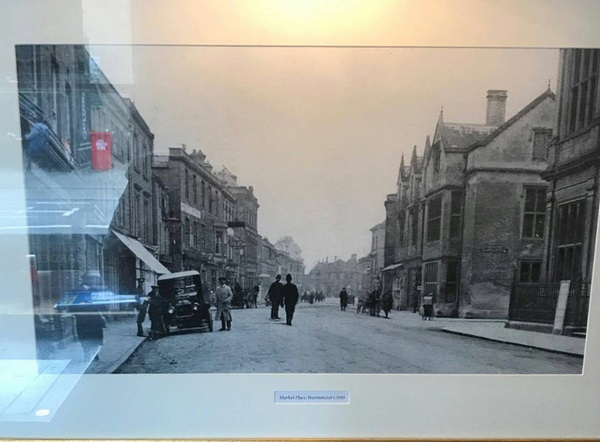
A photograph of Market Place, Warminster, c1925.
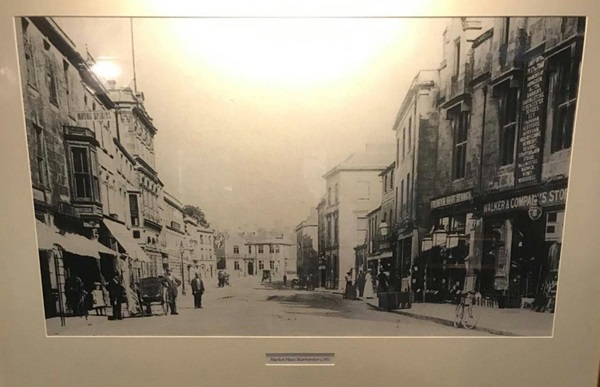
A photograph of Market Place, Warminster, c1955.
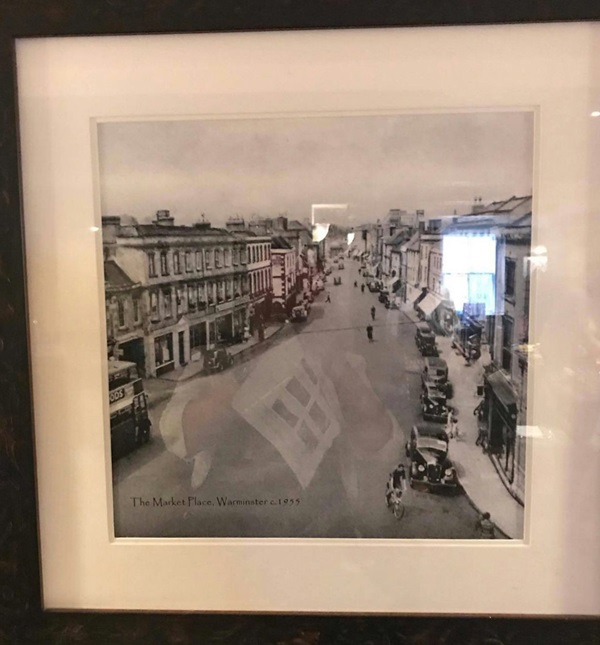
A photograph of The Bath Arms, Warminster, c1890.
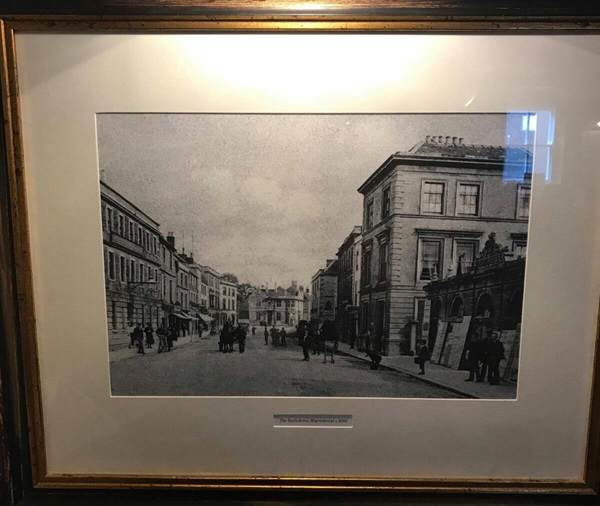
A photograph of the high street, Warminster.
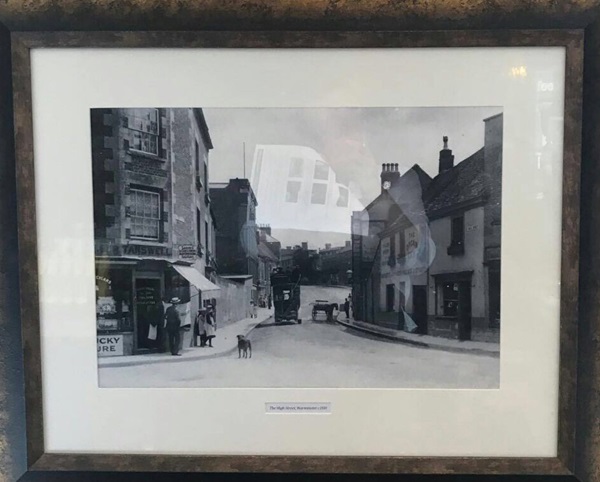
A photograph of Market Place, Warminster, c1945.
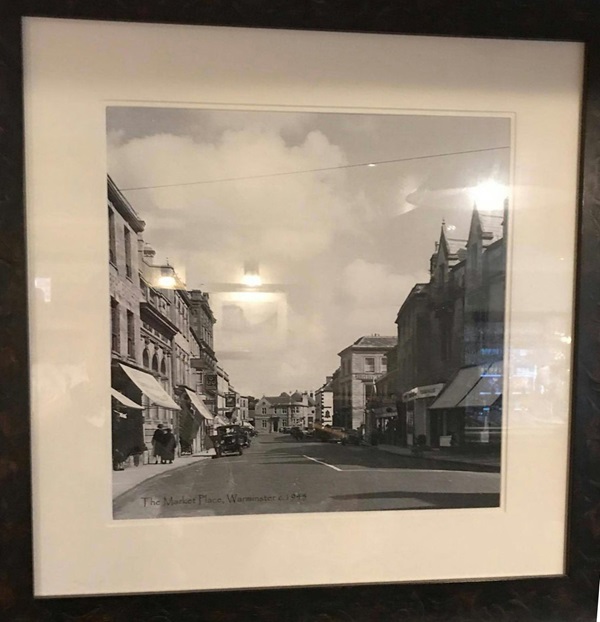
External photograph of the building – main entrance.
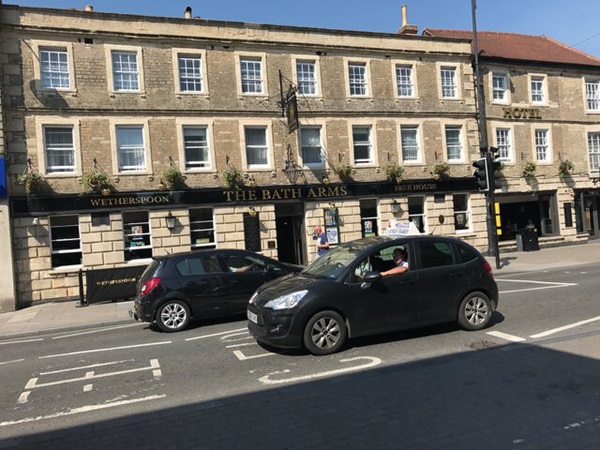
If you have information on the history of this pub, then we’d like you to share it with us. Please e-mail all information to: pubhistories@jdwetherspoon.co.uk